iPhone Touch Screen Not Working? Here's How to Fix It!
Aug 27, 2025 • Filed to: Phone Repair Solutions • Proven solutions
The touchscreen on your iPhone is its outstanding feature. The worst thing you can experience with freshly released iPhones is an unresponsive screen. There could be several reasons why the iPhone touch screen not working. The screen may have a manufacturing flaw or has accumulated too much dust.
If you have a similar problem, there are various workarounds you can try to get your touch screen to respond to your touches in the following tutorial.
- Part 1: 3 Surface Ways for iPhone Screen Not Responding to Touch
- 1.Clean your iPhone screen
- 2.Remove the iPhone case and the screen protector
- 3.Take off Lightning or USB accessories
- Part 2: 4 Software Ways to Fix iPhone Touch Screen Not Working
- 1.Force restart your iPhone
- 2.Uninstall some apps with problems
- 3.Update your iPhone
- 4.Factory reset iPhone
- Bonus Tips: Efficient Tool to Quickly Fix iPhone Touch Screen Not Working
Part 1: 3 Surface Ways for iPhone Screen Not Responding to Touch
1.Clean your iPhone screen
The iPhone has a powerful touchscreen that tracks electrical conductivity at your fingertips. So, dirt and filth can interfere with how your screen works, but moisture and liquid are a much bigger problem. If the screen is moist or damp, completely dry it before proceeding.
It's also worth noting that most types of gloves or mittens set obstacles to you from using the touchscreen. Take anything you're wearing off. However, specialist gloves with capacitive fingertips allow you to operate your iPhone outside in icy conditions.

2.Remove the iPhone case and the screen protector
The iPhone's touchscreen may appear sturdy enough to function almost flawlessly all the time. But it only works correctly under a minimal range of circumstances. For example, if you put a screen protector that is too thick, the touchscreen will be unable to detect the electrical capacitance in your fingertips.
Remove anything on or around the screen, such as the phone case and any screen protector that's keeping the screen from becoming scratched, if it's not working or is only working occasionally. If it still works after you remove those accessories, try a different case and a thinner screen protector.

3.Take off Lightning or USB accessories
In some cases, something plugged into your phone's Lightning port, like a charger or power bank, may interfere with the proper operation of your touchscreen. Unplug any such device. If the problem is rectified, the accessory or cable may no longer be compatible with the iPhone.
Part 2: 4 Software Ways to Fix iPhone Touch Screen Not Working
1.Force restart your iPhone
What should you do if the screen is unresponsive and you can't move the power of the slider? Apple recommends hard resetting an unresponsive iPhone to refresh the frozen system even if the screen is not working or the buttons are entirely inactive.

If you have an iPhone 8, 8 Plus, or later model, you should perform the following:
- Press and release the Volume Up button quickly. Press and release the Volume down button quickly.
- Finally, press and hold the Side button. Even if you see the power off slider, keep holding the Side button.
- Your iPhone will then shut off. When the Apple logo appears on the screen, release the Side button and wait for the reboot to finish.
A forced restart on the iPhone 7 and 7 Plus is performed as follows:
- Hold the Volume Down and Power (Sleep/Wake) buttons simultaneously.
- Then release both buttons when the Apple logo displays.
Here's what you need to do to force a restart on previous iPhones, starting with the iPhone 6:
- Hold down the Power (Sleep/Wake) and Home buttons for a few seconds.
- Then release both buttons when the Apple logo appears on the screen.
2.Uninstall some apps with problems
If you notice that your iPhone screen is not responding to touch in a specific app, the app may malfunction, and you should uninstall it as soon as possible. There are numerous problematic apps available; if you have one, your best option is to uninstall it from your iPhone.
Tap and hold the app, then tap the X sign to remove it.

3.Update your iPhone
Even if your iPhone screen is not responding to touch, you can update it by connecting it to your computer and entering Recovery Mode:
- Start iTunes by connecting your iPhone to your computer. Start Finder instead if you're using macOS 10.15 or later.
- If you have an iPhone 8 or later, swiftly hit the Volume Up, Volume Down, and Side buttons one after the other. On an iPhone 7, tap the Volume Down and Side buttons simultaneously. For earlier devices, press and hold the Home and Side buttons simultaneously.
- When your phone displays the Recovery Mode interface (a cord and a laptop on a black background), release the button (s). Select Update.

4.Factory reset iPhone
If your iPhone screen not responding to touch and nothing else has worked, there could be a significant hardware problem that requires the phone to be repaired or replaced.
Before you make that dramatic choice, you should conduct a factory reset. It will return the phone to the state it was in when you first unpacked it, wiping away all software updates, installed apps, and personal data.
That is fine if your phone is set to perform frequent cloud backups, but be aware that doing so may result in the irreversible data loss since the last backup.
You'll need to start the factory reset on a computer if you can't utilize the iPhone's touchscreen:
- Connect your iPhone to your computer via a USB cable.
- Launch iTunes (if you are on a Mac running macOS 10.15 or higher, start Finder instead).
- If you have an iPhone 8 or later, swiftly hit the Volume Up, Volume Down, and Side buttons one after the other. On an iPhone 7, tap the Volume Down and Side buttons simultaneously. For earlier devices, press and hold the Home and Side buttons simultaneously.
You should be able to restore or upgrade your iPhone on a Mac. To conduct a factory reset:
- Click Restore and follow the on-screen instructions. Click the Device button on a PC's top left corner of iTunes. Choose Summary, then Restore, and then follow the on-screen directions.

Bonus Tips: Efficient Tool to Quickly Fix iPhone Touch Screen Not Working
If the software problem is severe and none of the preceding solutions work, you may need to employ third-party software to repair iPhone screen not responding to touch.
Dr.Fone - System Repair has made it easier than ever for customers to recover their iPhone, iPad, or iPod Touch from the white screen, Recovery Mode, Apple logo, or black screen and address other iOS issues. While repairing the iOS system faults, no data will be lost.
Steps:
Step 1: Start Dr.Fone after it has been successfully installed. On the site, select "System Repair" from the drop-down menu.
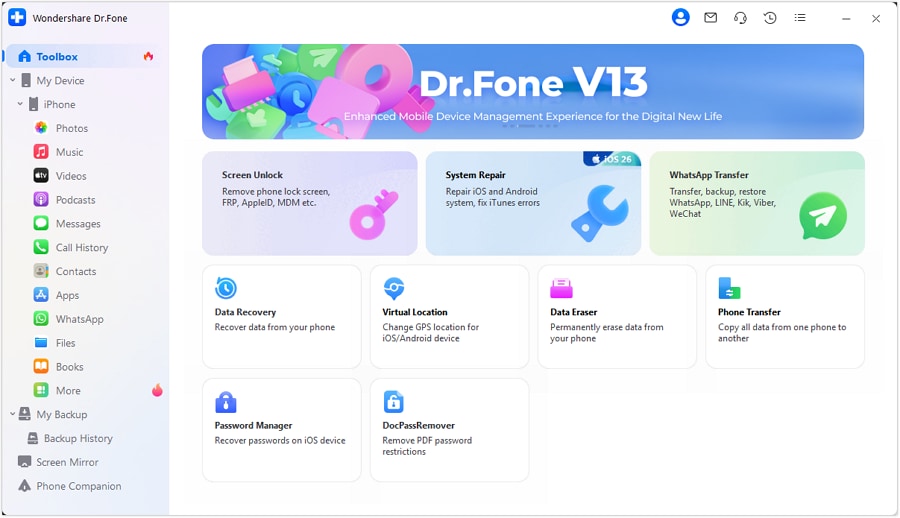
Step 2: After that, you must specify the type of smartphone you are repairing. Choose "iOS" because iPhones are being dealt with.
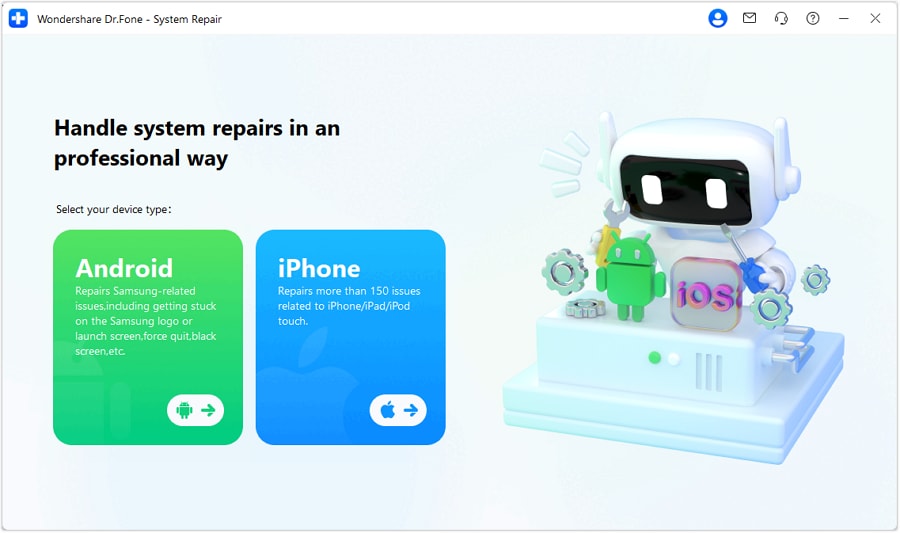
Step 3: You will be taken to a new screen where you must pick "iOS Repair" to repair the iPhone's system faults.
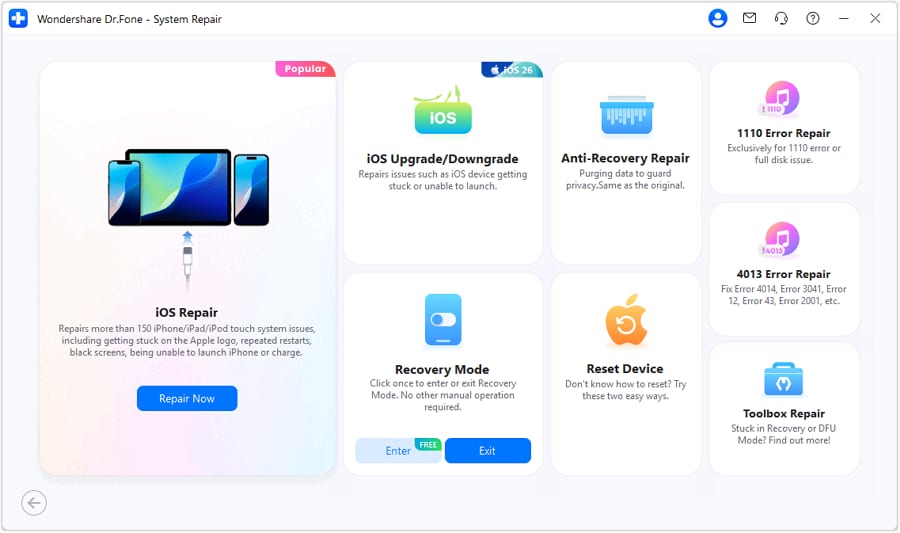
Step 4: Even if your iOS system problem isn't listed, you may select "Repair Now" and start the recovery process.
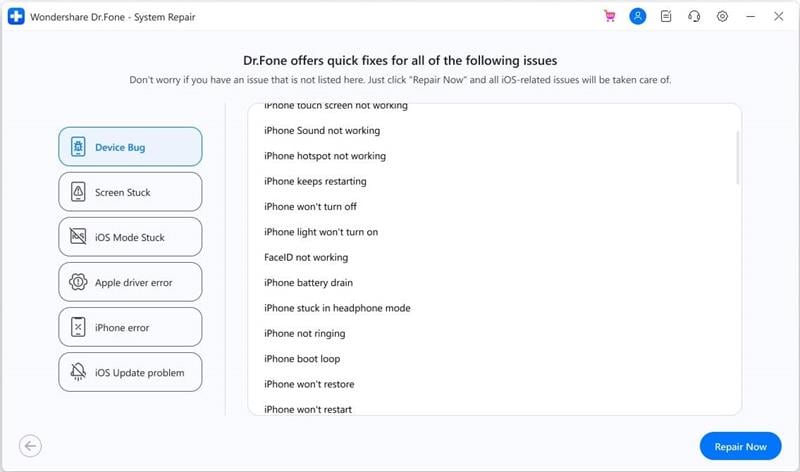
Step 5: To begin with the iOS repair, choose "Standard Repair" from the two options. This mode will attempt to fix your iOS device while protecting all data from loss.
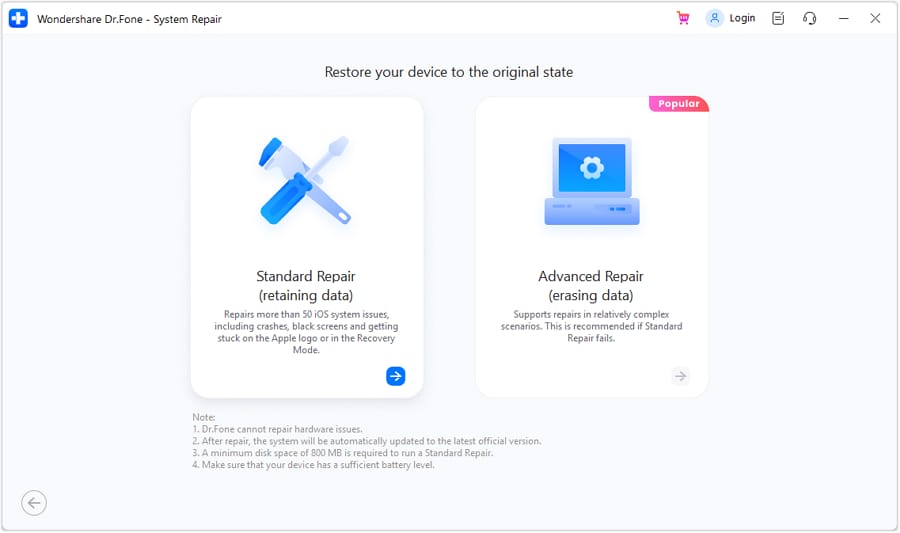
Step 6: You must boot your iOS device into Recovery Mode. You must first trust the computer to complete this process. To do so:
Connect the device to the computer using a USB cable and enter the password for the lock screen.
Tap the "Trust" option that appears in the pop-up window.
Following successful coverage, click "Enter Recovery Mode" to proceed. If your device is unresponsive or performing strangely, select the "Guide to Recovery Mode" option.
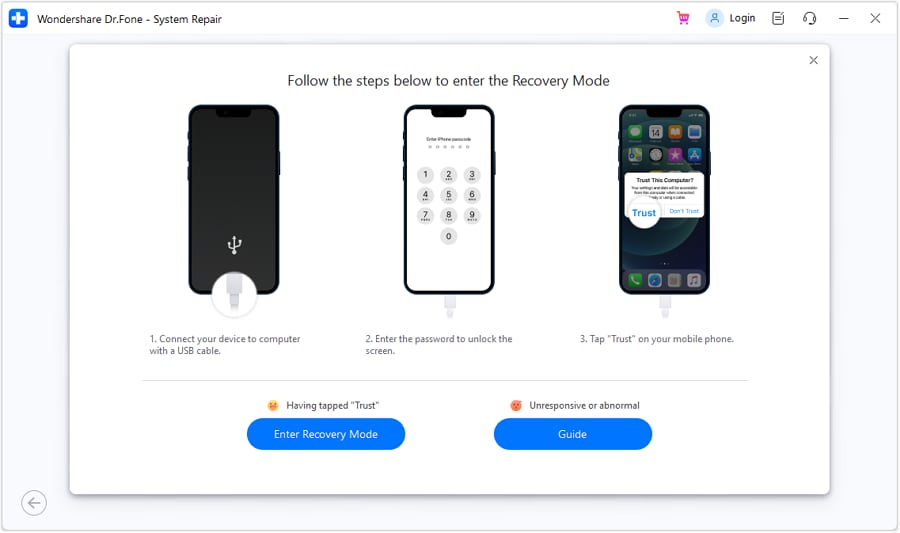
Step 7: Depending on your model, follow the on-screen instructions to boot your device into Recovery Mode.
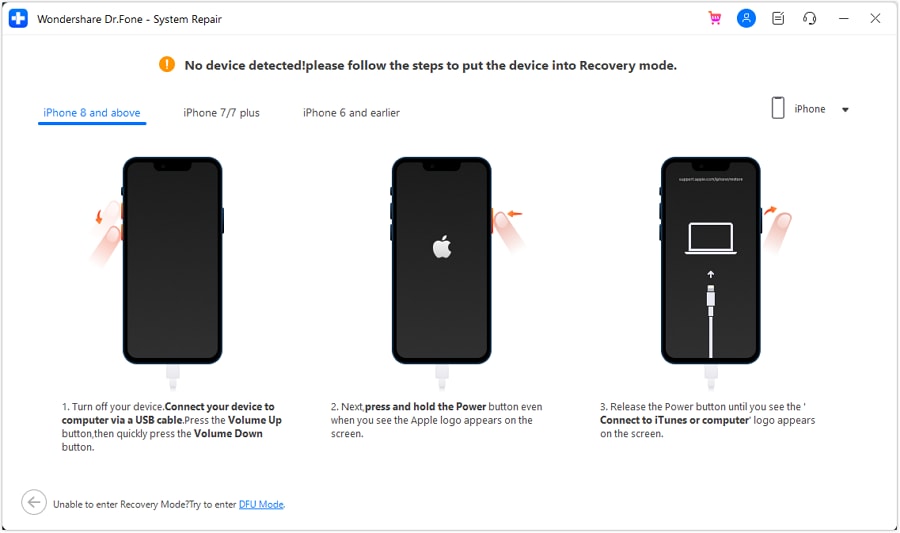
Step 8: The platform recognizes the device as soon as it enters Recovery Mode.
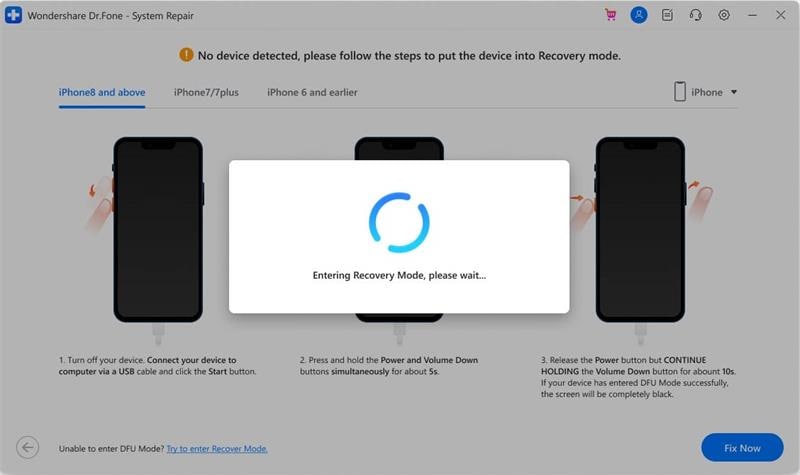
Step 9: The following window displays a list of different iOS firmware that can be installed on the iOS device. Click "Download" to begin the installation process for any of them.
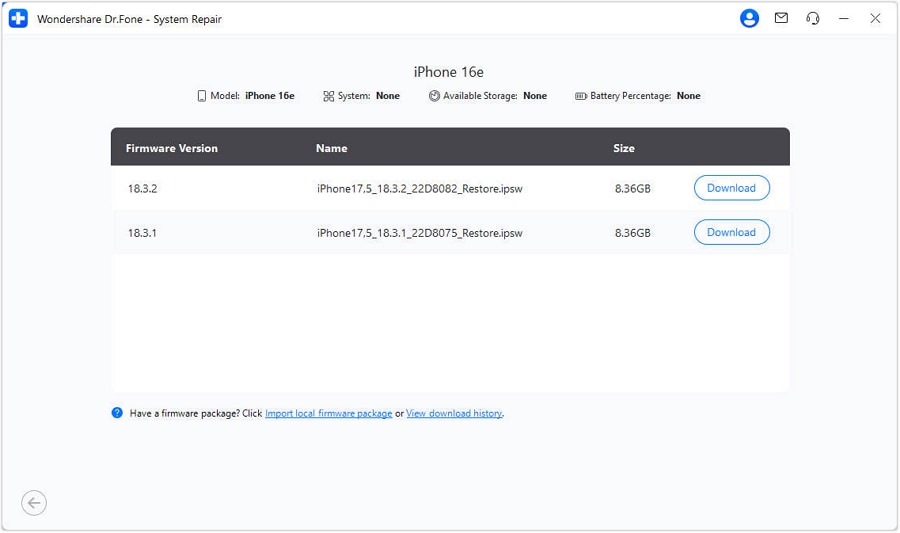
Step 10: The iOS firmware begins to download and is displayed in the progress bar across the PC.
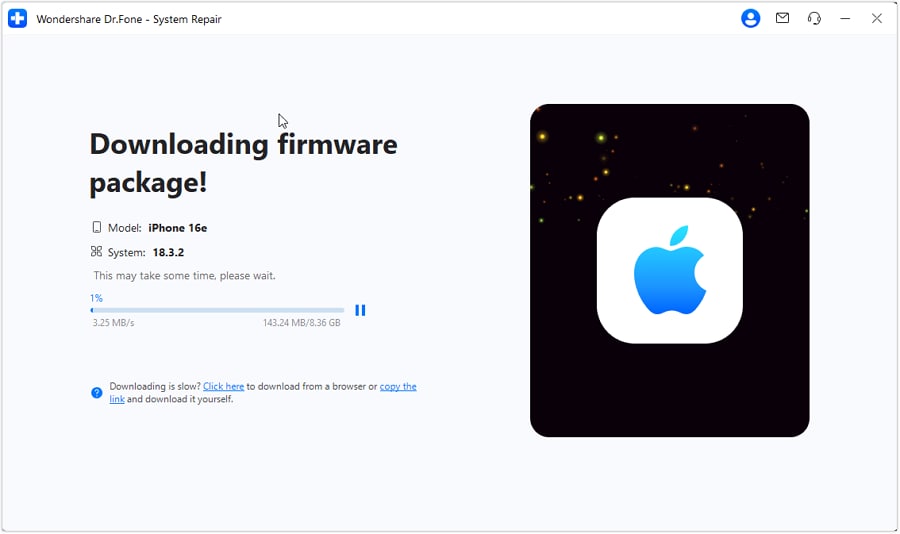
Step 11: After downloading the firmware, the platform validates it before installing it on iOS to avoid difficulties.
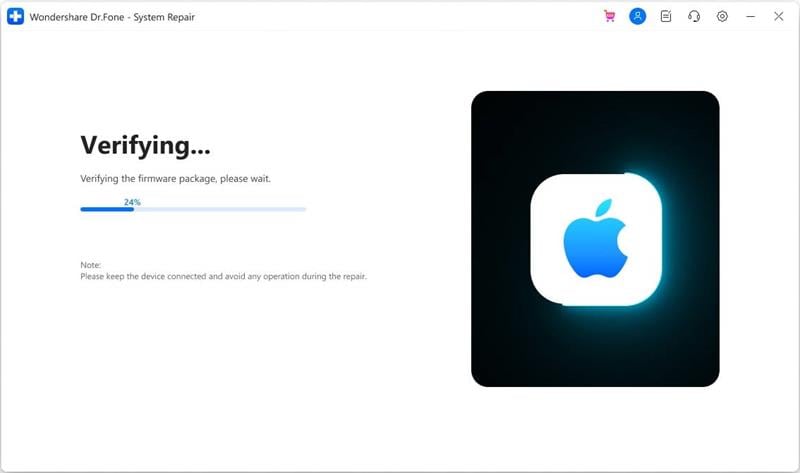
Step 12: After verifying the iOS firmware, select the "Repair Now" option to begin the iOS system recovery process. A progress bar depicts the repair procedure on the following screen.
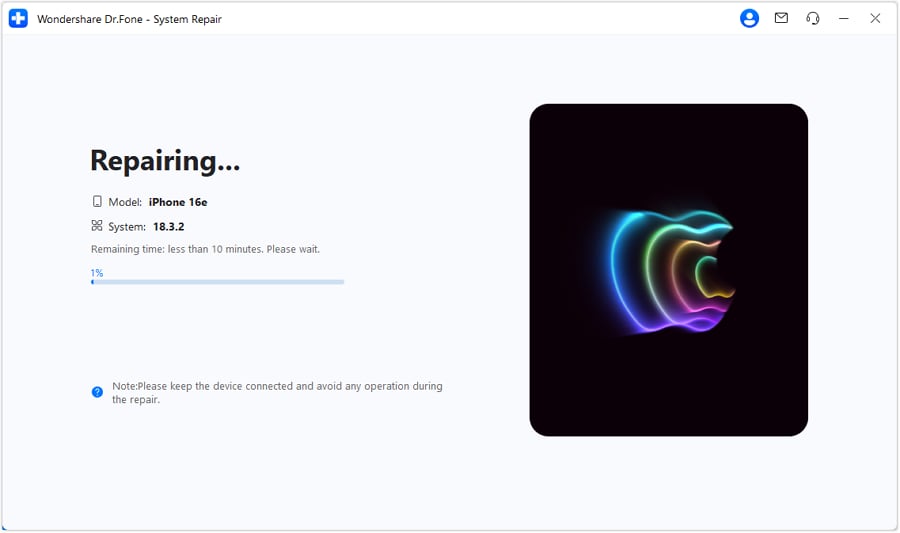
Step 13: When you're finished, the prompt window displays the successful completion of the process. To finish the execution, press the "Done" button.
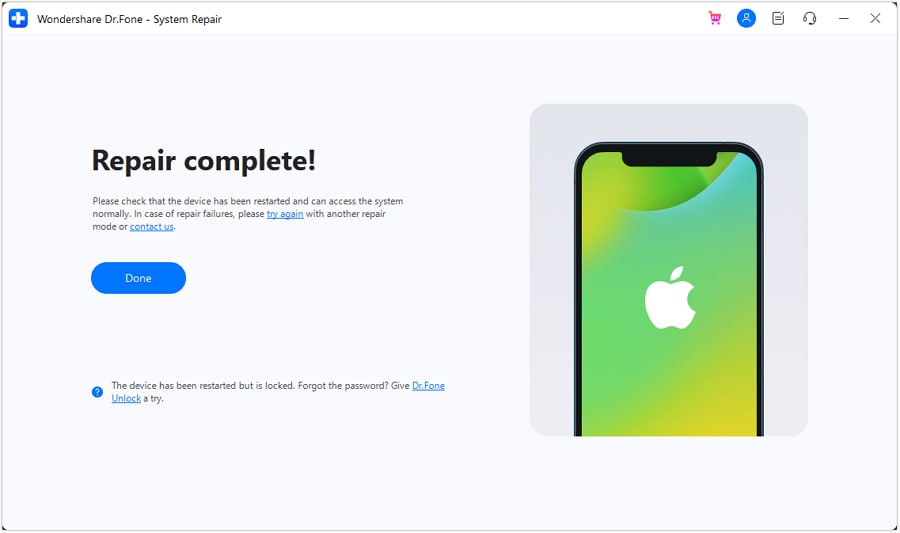
Conclusion
We've discussed why an iPhone touch screen not working, the primary causes, and what treatments are available to address the problem. We've also included our favorite tool, Wondershare Dr.Fone-System Repair, which can cure any iOS stuck issue with a single click.
iPhone Not Working
- iPhone Stuck
- 1. iPhone Stuck on Mute
- 2. iPhone Stuck on Loading Screen
- 2. iPhone Stuck on Emergency SOS
- 3. iPhone Stuck on Setting Up Apple ID
- 4. iPhone Stuck on Spinning Wheel
- 5. iPhone Stuck in Recovery Mode
- 6. iPhone Stuck in Restore Mode
- 7. iPhone Stuck on Apple Logo
- 8. iPhone Flashing Apple Logo
- 9. iPhone Won't Go Past Apple Logo
- iPhone is Frozen
- 1. iPhone Keeps Freezing
- 2. Fix Frozen iPhone Screen
- 3. iPhone Messages Freezing
- 4. iPhone Frozen in 10 Seconds
- 5. Force Quit Frozen Apps on iPhone
- 6. iPhone Frozen During Update iOS 15
- 7. iPhone Frozen During Update iOS 16
- iPhone Won't Turn On/Off
- 1. iPhone Keeps Restarting
- 2. iPhone Keeps Turning Off
- 3. iPhone Won't Turn Off
- 4. iPhone Won't Turn On
- iPhone Screen Problems
- 1. iPhone Red Screen of Death
- 2. iPhone Blue Screen of Death
- 3. iPhone Black Screen of Death
- 4. iPhone White Screen of Death
- 5. Blue Line on iPhone Screen
- 6. Flickering Screen on iPhone
- 7. iPhone Screen Won't Rotate
- 8. iPhone Touch Screen Not Working
- 9. iPhone Screen Recording Not Working
- 10. iPhone Screen Turned Black & White
- 11. iPhone yellow Dot Problem
- iPhone Servies Problems
- 1. iPhone No Service Problem
- 2. Safari Keeps Crashing on iPhone
- 3. Can't See iPhone Hotspot from PC
- 4. iPhone Hotspot Not Working
- 5. iPhone Bluetooth Not Working
- 6. iPhone Location is Wrong
- 7. iPhone GPS Not Working
- 8. iPhone Maps Not Working
- 9. Google Maps Not Working
- 10. Emergency Alerts Not Working
- 11. iPhone Airdrop Not Working
- iPhone Function Problems
- 1. iPhone Speaker Not Working
- 2. iPhone FaceTime Not Working
- 3. FaceTime Waiting for Activation
- 4. iPhone Notifications Not Working
- 5. iPhone Reception Problems
- 6. iPhone Auto Lock Not Working
- 7. iPhone Quick Start Not Working
- 8. iPhone Vibrate Not Working
- 9. iPhone Screenshot Not Working
- 10. iPhone Face ID No Working
- 11. iPhone Not Saving Photos
- 12. iPhone Do Not Disturb Not Working
- 13. iPhone iMessage Effects Not Working
- 14. iPhone Liquid Detection Problem
- Other iPhone Problems
- 1. Can't Update / Restore Error 1100
- 2. iPhone Camera Black or Not Working
- 3. iPhone / iTunes Error 4013
- 4. iPhone Front Camera Not Working
- 5. iPhone / iTunes Error 11
- 6. Do Not Disturb on iPhone Settings
- 7. iPhone Proximity Sensor by Yourself
- 8. Replace iPhone Digitizer
- 9. Accessory May Not Be Supported
- 10. Fix GPS Problems on iPhone
- 11. Low Power Mode on iPhone
- ● Manage/transfer/recover data
- ● Unlock screen/activate/FRP lock
- ● Fix most iOS and Android issues
- Repair Now Repair Now Repair Now















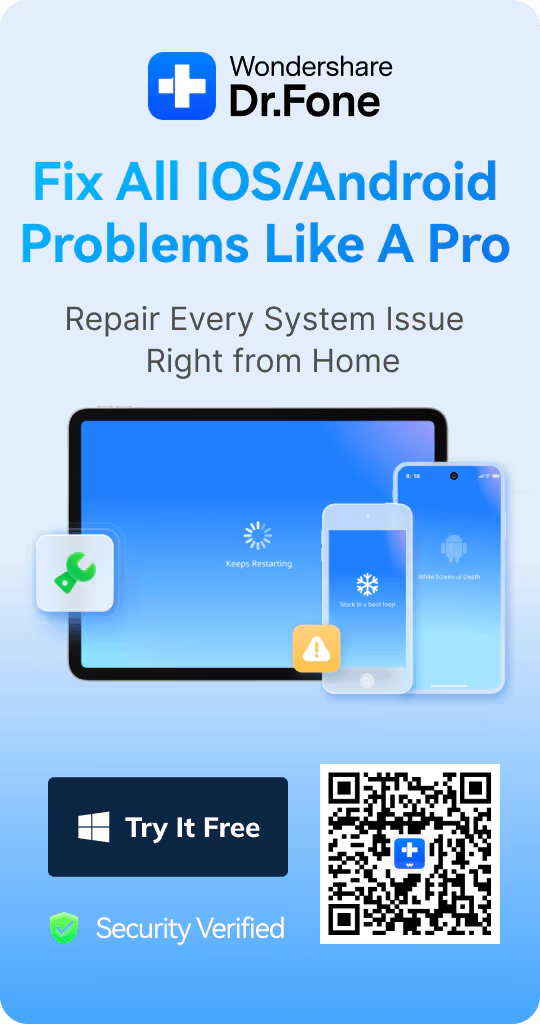

James Davis
staff Editor
Generally rated4.5(105participated)